Turn A Gundam began airing on the 9th of April 1999. Directed by Yoshiyuki Tomino, it celebrated the Gundam franchise’s 20th anniversary as part of Sunrise’s “Big Bang Project”. It has been twenty years since then. To commemorate Turn A Gundam‘s own 20th anniversary, I’d like to reflect on its significance and offer some reasons why I think it’s an anime worth checking out!
Note: this post is relatively spoiler-free.
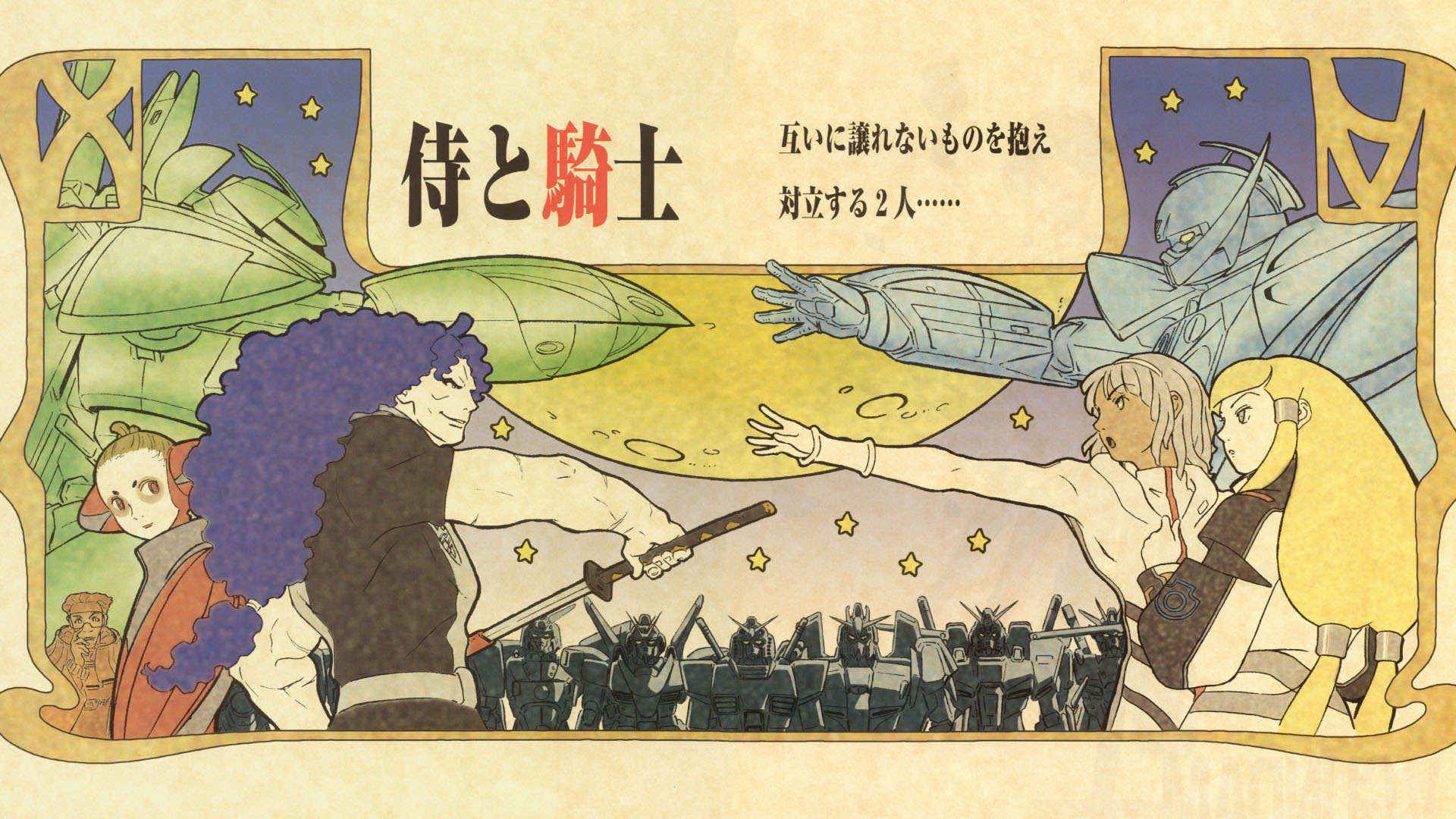
First and foremost, despite its reputation and place in the series, you don’t NEED to have prior exposure to Gundam to watch Turn A Gundam. It is, of course, important to be aware that Gundam is a large franchise of militaristic war anime set across multiple timelines. Turn A Gundam intends to serve as a closure or universal qualifier to the metaseries (hence the title of the show bearing the logical operator symbol ∀). Familiarity with the Universal Century and some Alternate Universe titles do enrich the experience, and personally I would recommend one to have some familiarity before jumping into a title like this; however the plot and themes are all very much self-contained. If you have minimal exposure to Gundam or are even brand new, don’t hesitate to give it a try. Plenty of people have watched and enjoyed the show in such a manner.
It marked the return of franchise creator Yoshiyuki Tomino, who had voluntarily taken a leave of absence following Victory Gundam‘s completion in 1994. Tomino’s departure was significant, as he had directed every TV Gundam entry since its inception in 1979, so the period between 1994 and 1999 featured Gundam series which were not directed by him and did not encompass the Universal Century timeline. As a result, it was seeing a decline in ratings and Sunrise attempted to rejuvenate the franchise by bringing back its creator. Tomino bolstered his return with a large and celebrated supporting staff. Some notable names include mechanical designer Syd Mead, character designer Akira Yasuda, music composer Yoko Kanno, animators Masami Goto and Atsushi Shigeta, and scriptwriter Hiroyuki Hoshiyama.
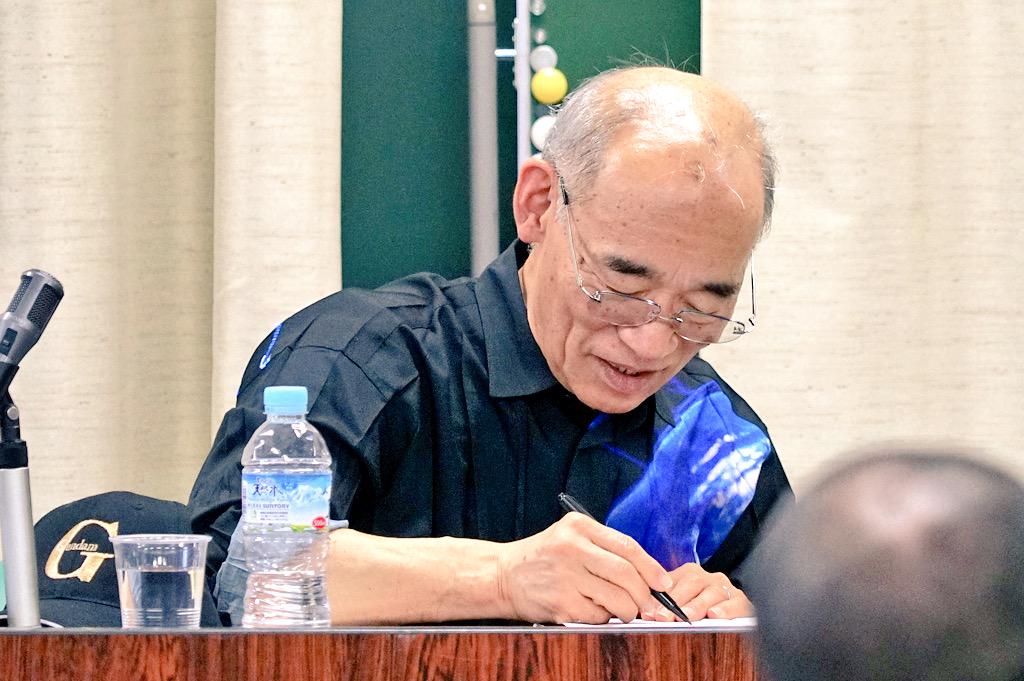
Turn A Gundam is the last TV Gundam to be mostly filmed with camera and painted on cels. The late 90s through early 2000s marked a transitory period in which the anime industry was moving away from cel-animation and towards digitally-colored images. Cel-animation is often associated with “old anime”, and Turn A Gundam lands at the cusp of that, signifying the end of an era. The next major entry, Gundam SEED, would primarily feature digital imaging.
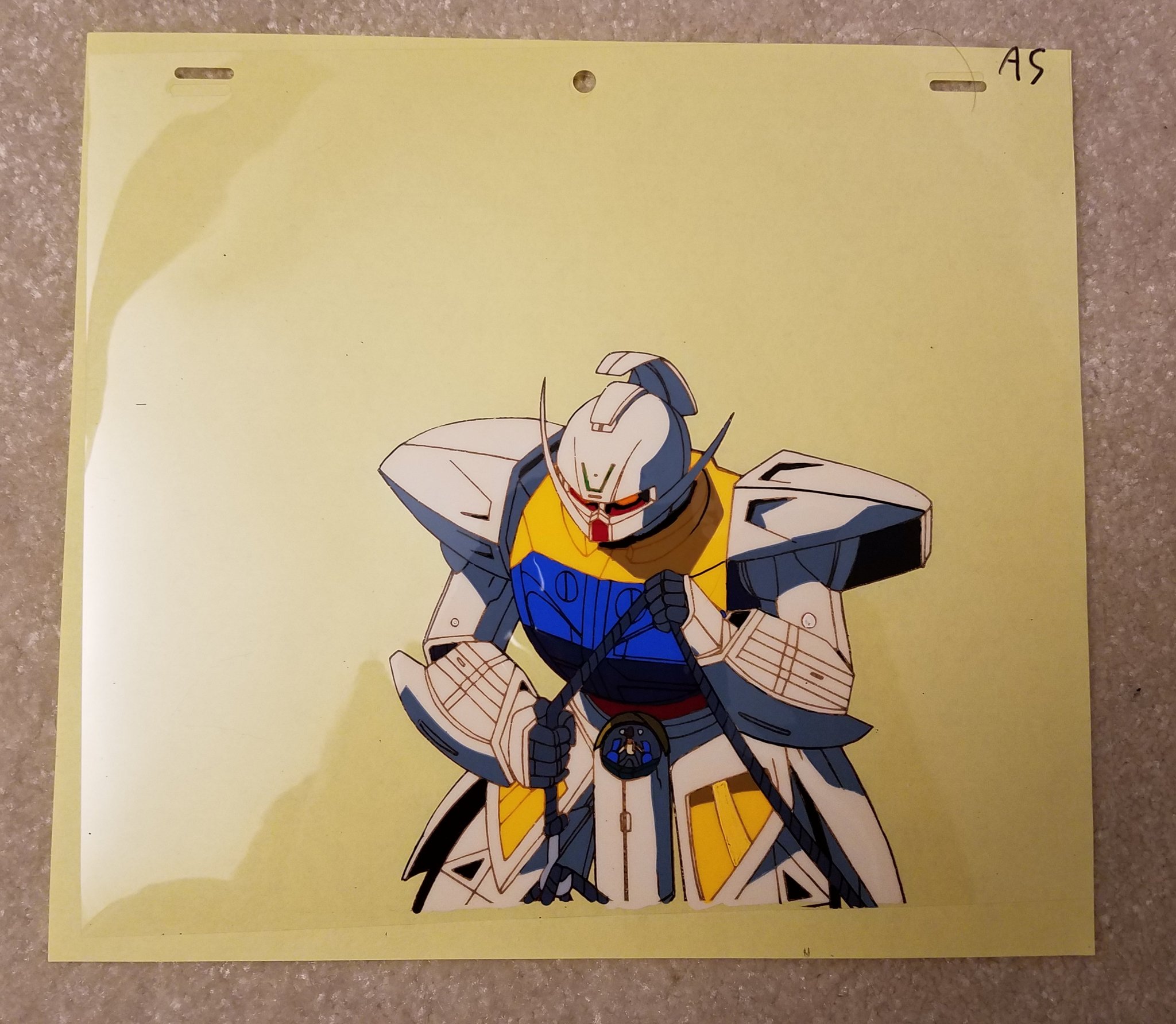
Its setting and premise are highly unique for a Gundam anime. Turn A Gundam is set in what appears to be the early 1900s, with clear traces of Victorian-era aesthetic, being a dramatic contrast from the far-future societies found in typical Gundam. The era is obviously not advanced enough to harbor giant robots, but Turn A Gundam spins this by introducing a separate race of humanity that lives on the Moon. These highly-advanced people, known as the “Moonrace”, have lived in isolation for thousands of years and now seek to return to their homeland, the Earth. Tensions rise and war breaks out as ancient weapons are discovered and unearthed by the Earthlings, and they use them to combat the alien invaders. Meanwhile, political figures on both sides of the conflict attempt to engage in peace talks.
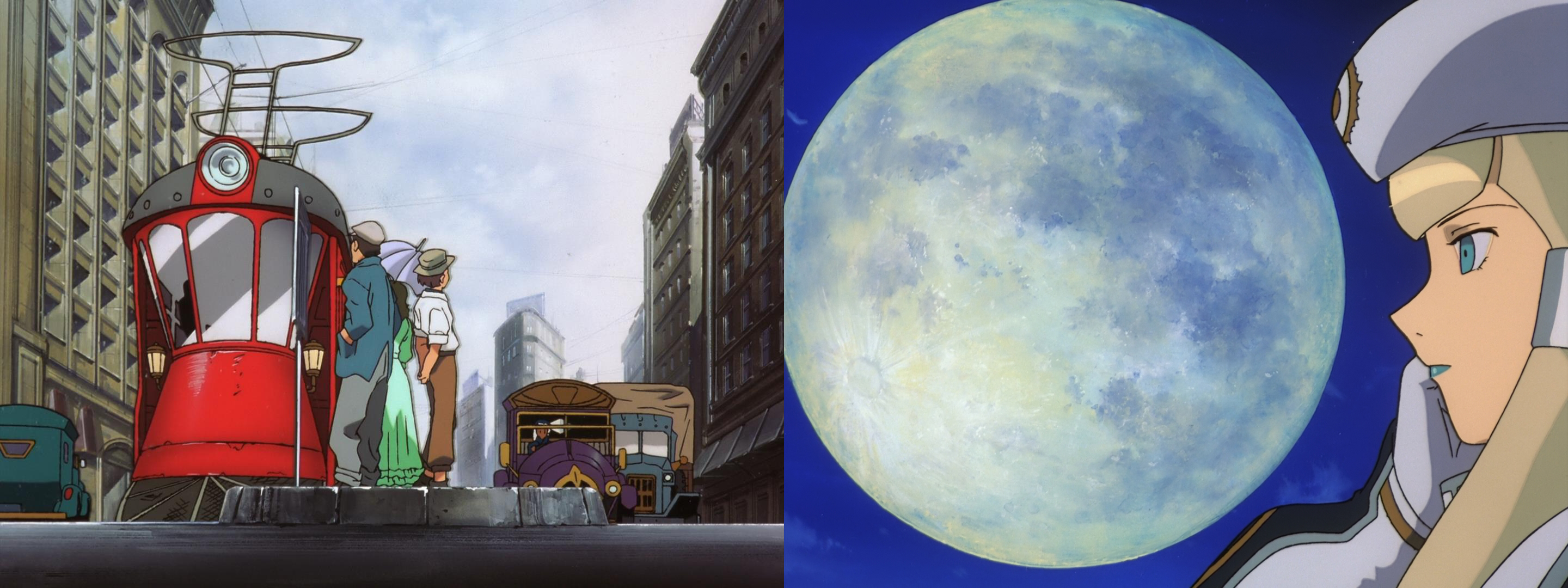
Turn A Gundam is atmospheric by design, often relying on landscape, lighting, and music to create a sense of ambiance and mood. Because of this, people often compare it to films developed by Studio Ghibli (whether this is a justifiable comparison or not is up for debate, of course). The clash of technologies between the Earthlings and Moonrace also offer a stylistic mismatch that carries itself for the entire show: the cars are old, the buildings are half-timbered, and the Earth militia’s fighter jets are worthless in combat, yet all of this is painted on the same canvass as giant robots, advanced battleships, and ancient technological marvels.
![[EG]Turn-A_Gundam_BD_11(1080p_10bit)[DD6FCF71].mkv_snapshot_02.15_[2016.10.09_11.14.15]](https://turnafeezy.files.wordpress.com/2019/04/egturn-a_gundam_bd_111080p_10bitdd6fcf71.mkv_snapshot_02.15_2016.10.09_11.14.15.jpg)
The cast of characters are very dynamic and likable. The protagonist, Loran Cehack, is marked by his loyalty, humbleness, convincing brand of pacifism, and genuine concern for others. Guin Lineford is an ambitious and conniving politician, whose intentions and morality are difficult to decipher even for the viewer. Harry Ord’s fiery demeanor and undying chivalry are hard to dislike, and for a “Char clone” he is unexpectedly unambitious. And the women are, frankly, amazing. Dianna Soreil is the intelligent and mature queen of the Moon, characterized by her unyielding sense of responsibility. Kihel Heim is thrust into a role far beyond her capabilities yet manages to persevere and find success. Sochie Heim is aggressive and spirited in nature and actually one of the most capable mecha pilots in the show. And Lily Borjano is a shrewd, sharp, playful, and astute politician. In a franchise often criticized by its portrayal of women, Turn A Gundam lays this to rest with a cast of women having agency and taking center stage. It can even be argued that Dianna and Kihel are the two central characters of the show, with Loran serving more as a point-of-view facilitator.

The character designs are provided by Akira Yasuda (“akiman”), of Street Fighter fame. As a then-employee of Capcom, akiman had to be recruited on a contractual basis. Tomino aimed to bridge the gap between anime and gaming and thus sought after a top talent in the video game industry. During initial planning akiman was tasked to design characters in modern day clothing, but this was changed as the setting was revised. He primarily used the Japanese production of the German-language musical “Elisabeth” as a reference and did additional research on Victorian-era clothing for inspiration. Turn A Gundam is an anime which utilizes its setting to great degree, and akiman’s character designs are an integral part of that. Since his time on Turn A Gundam, akiman has continued to stay involved in the anime industry, providing character and/or mecha designs for Overman King Gainer, Code Geass, Bodacious Space Pirates, and Gundam Reconguista in G.
The music is absolutely phenomenal. Packing a score by Yoko Kanno (of Cowboy Bebop fame), Turn A Gundam‘s soundtrack is often praised by fans and critics alike. Kanno had previously worked with Tomino on Brain Powerd, where she struggled to decipher his directing style. However, by Turn A Gundam she had familiarized herself with his design philosophy and was able to compose music that could become part of the show’s identity. Turn A Gundam‘s music is very varied: there’s a mix of tribal, industrial, melancholic, and melodic music, marked by blues, country, brass fanfare and bravado, and occasional minimalism. The soundtrack also features many recurring themes, chords and notes, as it very much utilizes leitmotif to establish a sense of continuity. Its defining track is “Moon”, which features vocals by Yoko Kanno herself under the pseudonym Gabriela Robin. There are many renditions of the song, including the second ending theme “Moon’s Cocoon” (this blog’s namesake!). “Moon” and its renditions have effectively been immortalized in context of Turn A Gundam, and many people involved in the show still regularly listen to the song to reminiscence. Several covers exist as well.
The mecha designs are atypical for a Gundam anime. Visual futurist and Hollywood legend Syd Mead (of Alien, Tron, and Blade Runner fame) was requested by Tomino to provide mechanical designs. He was hired on to create a new “zero-base” for Gundam that would at the same time be recognizable to fans. Mead incorporated his trademark neofuturistic style into Turn A Gundam‘s mecha, giving way to plenty of sleekness, curvature and inside-out design. The Turn A Gundam itself is marked by its characterful mustache, an odd design choice that the show is humorously self-aware of. Mead’s designs initially faced heavy criticism, primarily by Western fans, but over the years fan opinion has warmed up. As a case in point, the Turn A Gundam was selected by fan poll in 2007 to have the honor of being the 100th release of the Master Grade line of Gundam model kits.
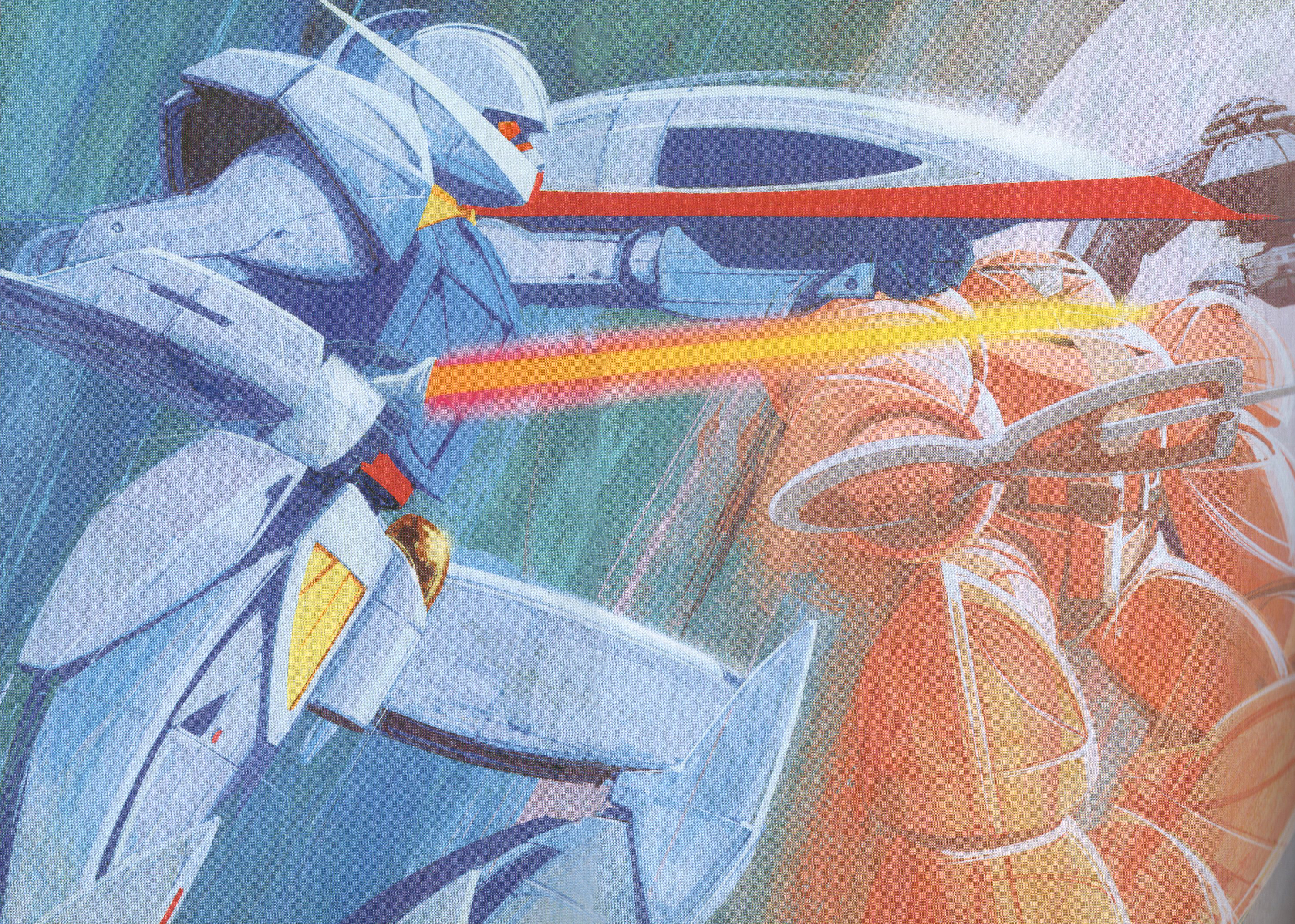
A number of voice actors and actresses attribute their career success to their time on Turn A Gundam.
- Romi Park, the voice of protagonist Loran Cehack, had her major career breakthrough. She would go on to be a prolific actress in the industry, most famous for her role as Edward Elric in Full Metal Alchemist. She remains a staunch Turn A Gundam and Gundam loyalist and often appears as minor characters in Gundam anime to this day.
- Tetsu Inada, the voice of Harry Ord, also had his major career breakthrough. He has since had several voice roles in anime and video games.
- Takehito Koyasu, the voice of Gym Ghingham and no stranger to Gundam (previously Zechs Merquise in Gundam Wing) was able to grow his brand. Now a well-known name, he often voices villains such as Dio from JoJo’s Bizzare Adventure.
- Jun Fukuyama, the voice of Keith Laijie, had his humble beginnings. He would go on to be a very prolific actor in the industry, famous for his roles in anime such as Code Geass and Spice & Wolf, and video games such as Persona 5.
I hope this brief rundown has piqued your interest, if not more! Turn A Gundam is an anime which is very special to me, and I aim to share my love with others. If you are in North America, you can purchase the two Blu-ray collections via Rightstuf. Happy 20th anniversary!
Additional reading:
- The Turn A Gundam resource compilation. A consolidation of materials and resources for English-speaking audiences. Contains links to manga and novel translation projects, notable interviews, audio commentary translations, selected blog posts and articles, and a MEGA folder with many goodies.
- Turn A Gundam staff highlights: a series of blog posts about key staff members behind the show.
- A celebration of Turn A Gundam‘s animation. A video highlighting the show’s “sakuga” and animation and a look into some of its prominent animators.
- I encourage you read through my other posts on this blog if you’d like to learn more.
Trivia:
- Turn A Gundam invokes the spirit of The Tale of the Bamboo Cutter (also known as The Tale of the Princess Kaguya), an ancient Japanese monogatari which tells the story of a mysterious Moon princess. Turn A Gundam has a lot of thematic imagery and commentary pertaining to the Moon and its history and much of it is centered around the queen of the Moon, Dianna Soreil.
- The following episodes received audio commentary tracks in the Blu-ray releases (2014-15) by fan poll, indicating their popularity:
- 1: “Howling at the Moon”
- 8: “Laura’s Cow”
- 10: “Visit to a Grave”
- 21:” Dianna’s Desperate Fight”
- 27: “Sunrise at Midnight”
- 43: “Dark History”
- 49: “Moonlight Butterfly”
- 50: “The Golden Autumn”
- There’s reason to believe that Yoshiyuki Tomino did not want Turn A Gundam to be a Gundam anime. This is fueled by rumors of Turn A Space, which would’ve been an anime encompassing all of Tomino’s filmography rather than being tied specifically to Gundam.
- Until Gundam Reconguista in G in 2014, Turn A Gundam was the last TV Gundam Tomino had directed.
- Tomino once claimed that he’d like to remake Turn A Gundam in 20 years’ time. He also proclaimed that the show would be a hit in 50 years.
- The TV anime is accompanied by various manga and novel adaptations.
- Turn A Gundam: Wind of the Moon, a prequel story written and illustrated by Akira Yasuda. Set two years prior to the start of the TV series, it follows a younger Loran on the Moon and provides additional context and backstory on the Moonrace as a people.
- A picture book titled Turn A Korokoro by Akira Yasuda.
- A manga adaptation written and illustrated by Atsushi Souga.
- A manga adaptation written and illustrated by Kōichi Tokita.
- A 5-volume novel adaptation by Shigeru Sato.
- A 2-volume novel adaptation by Harutoshi Fukui. Fukui would later go on to pen the highly successful Gundam Unicorn novels.
- Turn A Gundam is featured in a number of Gundam video games, such as the G Generation and Gundam Vs series.
- Turn A Gundam is featured in the following Super Robot Wars crossover video game series:
- Super Robot Wars Alpha Gaiden (2001)
- Super Robot Wars Z (2008)
- Super Robot Wars Z2 Hakai-hen (2011)
- Super Robot Wars Z2 Saisei-hen (2012)
- Super Robot Wars Z3 Tengoku-hen (2015)
- Super Robot Wars X-Ω (2015).

based.
LikeLiked by 1 person
Hi there, just wanted to let you know that in the Super Robot Wars section, Z3: Tengoku-Hen is listed twice. Also, Turn A does feature in Z2: Saisei-Hen, in addition to Hakai
LikeLike
Thanks for catching that! Not sure how I screwed that up. It’s been fixed.
LikeLike